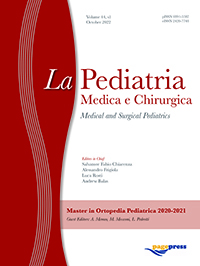Slipped capital femoral epiphysis: Diagnostic pitfalls and therapeutic options

All claims expressed in this article are solely those of the authors and do not necessarily represent those of their affiliated organizations, or those of the publisher, the editors and the reviewers. Any product that may be evaluated in this article or claim that may be made by its manufacturer is not guaranteed or endorsed by the publisher.
Authors
One of the most prevalent hip pathologies that develops during adolescence is Slipped Capital Femoral Epiphysis (SCFE), and over the past few decades, its incidence has been rising. To ensure an early diagnosis and prompt intervention, orthopedic surgeons should be aware of this entity. Review of recent developments in clinical examination and imaging diagnostic procedures. The presentation includes commonly used imaging methods, slippage measurement techniques, and classification schemes that are pertinent to treatment. An overview of SCFE surgery based on pertinent study findings and knowledge gained from ongoing clinical practice. The gold standard treatment for stable SCFE cases— those in which the continuity of the metaphysis and epiphysis is preserved—is pinning in situ using a single cannulated screw without reduction. However, there are disagreements over the best course of action for stable moderate/severe SCFE. On the best surgical strategy for unstable epiphysiolysis, no universal agreement has been reached. Finding the surgical procedure that will improve the long-term outcomes of a slipped capital femoral epiphysis is the question at hand.
How to Cite

This work is licensed under a Creative Commons Attribution-NonCommercial 4.0 International License.
PAGEPress has chosen to apply the Creative Commons Attribution NonCommercial 4.0 International License (CC BY-NC 4.0) to all manuscripts to be published.






